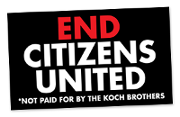Biblio
Filters: First Letter Of Title is C [Clear All Filters]
(1997). Core Java 1.1 Volume 2.
(1996). Changing the Bully Who Rules the World: Reading and Thinking about Ethics.
"We serious readers like to meditate upon villainy when we find it in life or in books. Such meditating makes us feel philosophical. Helping professionals are less peaceable. They think of human cruelty as something to study with the unswerving goal of getting rid of it. They interest themselves with, among other subjects, a spectacular specialty of villainy that would have made the poet Tom McGrath prick up his ears—that is, the villainous cunning by which a few human beings condition whole enclaves of other human beings dutifully to commit large-scale cruelty. They regard cruelty the way physicians regard a bacterium or a virus: first, they identify it as fast as they can—get its measure, so to speak, figure out its lifestyle and habitat of choice—and then second, they devise for it the most hostile environment that their technical prowess can invent. We would be furious if our doctor looked into our sore throat, drew back, and then cried out, 'How utterly fascinating! How extraordinary, really, the way those germs writhe and thrive in the host's dark vault of throat!' We want the doctor to be a confrontational agent of change, not an aesthete. If our doctor won't get rid of those squatters we'll find another doctor who will." (p. xxii)
(1996). Concepts of Programming Languages.
(1995). C++ Templates and Tools.
(1994). Competing for the Future.
"There beats in every person the heart of an explorer. The joy of discovery may be found in the pages of a new cookbook, in a brochure of exotic vacations, in an architect's plans for a custom-built home, in the trek to a remote trout stream, in the first run down a virgin-powdered ski slope, by the opportunity to explore the unfamiliar. Thus, it's not surprising that when a company's mission is largely undifferentiated from that of its competitors, employees may be less than inspired." (p. 132)
(1994). Coping with Difficult Bosses.
"There are certainly times when honest spontaneity is the key to improved human relationships, but while you are being harpooned by a hostile boss is not one of those times. It is then you need to do what actors do—communicate emotions you do not feel." (p. 20)
(1994). The Customer Comes Second.
"Everybody has ideas, some better than others. But they live in people's minds. They need to be brought out, refined, tested, and implemented. Ideas are the lifeblood of a company. The weave the fabric of its future, but they're fragile.
"Ideas come to the curious—those who ask, "What would improve our lives?" But ideas have to be nurtured and cultivated. The stifling of ideas starts when we're young and told, "Just do it and don't ask why," or "That's just the way it is." Creativity and innovation aren't emphasized enough in our schools, homes, or professional lives, but people who seek these gifts can and will find them in the right environment." (p. 156)
"Ideas come to the curious—those who ask, "What would improve our lives?" But ideas have to be nurtured and cultivated. The stifling of ideas starts when we're young and told, "Just do it and don't ask why," or "That's just the way it is." Creativity and innovation aren't emphasized enough in our schools, homes, or professional lives, but people who seek these gifts can and will find them in the right environment." (p. 156)
(1994). C++ Components and Algorithms.
(1994). Conquering C++ Pointers.
(1993). C.G. Jung and the Problem of Evil: The Strange Trial of Mr. Hyde.
"To the extent that we are egocentric we live in fear, under a sense of constant threat. We also live out and fulfill only a small portion of our personalities, because the egocentric life is a cramped life. It is like living inside a walled, heavily defended castle. Here we try to feel secure, but it does not occur to us that our castle is also our prison." (p. 133)
(1993). Communicating at Work.
Basics of conflict resolution include: supportiveness, positiveness, equality.
(1993). Crazy Bosses: Spotting Them, Serving Them, Surviving Them.
"Today, American workers exist in the most primitive form of group, one that is tradition-free and free of loyalty. Such an environment generates tremendous fear in people, fear of loss, of death, of dissolution and shame. Fear that drives people together. Fear that keeps people apart. It is a fear produced by the incessant demand for short-term results and the feeling of danger supplied by a variety of villians. And it is not irrational. It is real. It is sane." (p. 94)
(1993). The Creative Spirit.
"'Love is not a word people talk about easily', says Larry Wilson, 'Yet, increasingly, we're seeing that people are wanting to know that somebody cares about them, that they are not just seen as some interchangeable part. Real leadership is about demonstrating that your intention is to care for people and support their growth.'" (p. 139)
(1993). Computer Ethics.
(1991). The Corporate Negaholic: How to Deal Successfully With Negative Colleagues, Managers and Corporations.
"The alternative action was to look at the inequities and the resentments and find solutions which would create a win-win outcome. Unless everyone wins, no one really wins." (p. 91)
(1989). Creative Organization Theory.
"As we all know, bureaucracies are supposed to operate 'by the rules.' They are places where individual initiative, enterprise, and creativity are supposed to take second place—if they are permitted at all!—to the policies and procedures that have been defined or authorized by those in charge of the organization as a whole.
Weber observed that the bureaucratic approach to organization mechanized the process of administration, exactly as machines had routinized production in industry. And his writings make frequent reference to how this process of mechanization squeezes out the human dimension." (p. 49)
(C)2014 CC-BY-NC 3.0, workcreatively.org











 ]
]